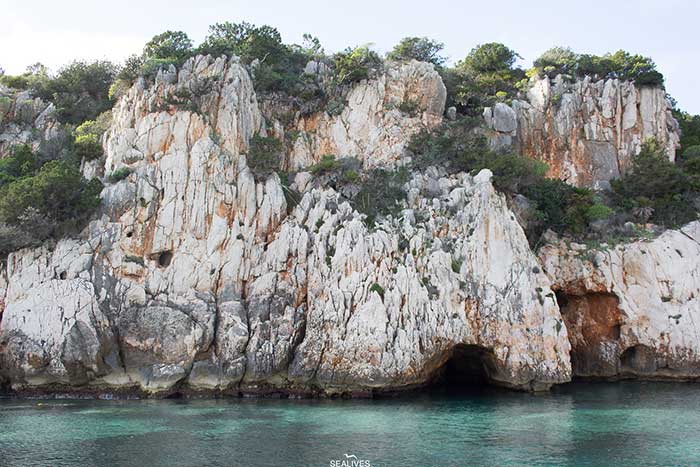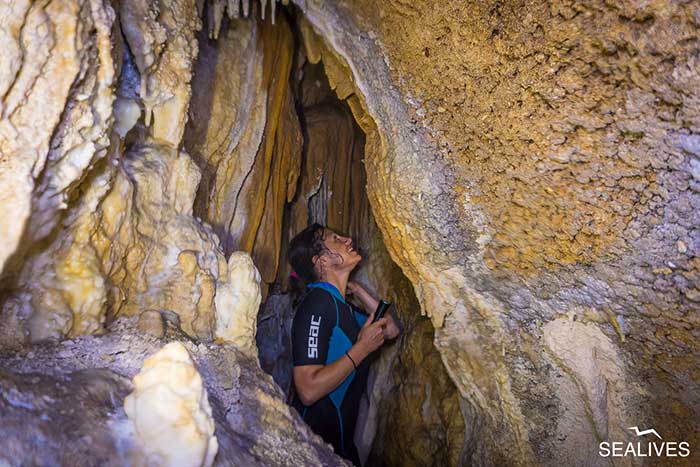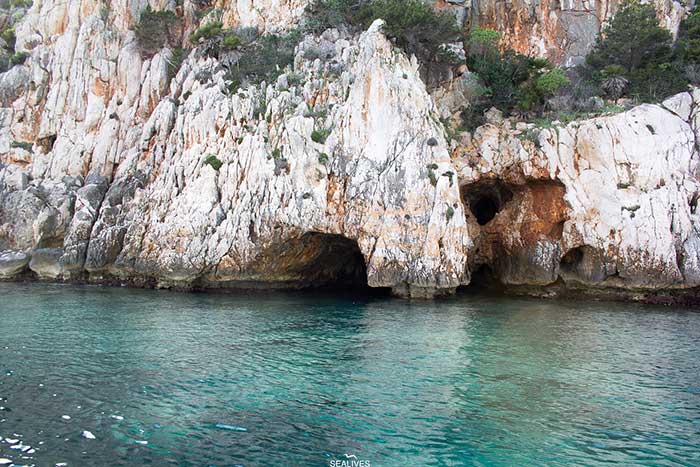

The karst phenomenon
The territory that extends from the western part of Alghero to Punta delle Gessiere, therefore including the entire Capocaccia massif and the band of high cliffs, is formed by a type of calcareous geology which is characterized by a phenomenon called karst
This area, which we go to explore during our excursions by sea, looks like a rocky landscape full of cavities of disparate and varied shapes, many of which starting from small openings continue into large rooms. The famous caves of Neptune are an example of this.
Karst phenomena is the phenomenon identified through the chemical activity exerted by water, both of dissolution and precipitation.
The word originates from the name of the region where this phenomenon was initially studied, in the Triestine Karst.
It is generally divided into two phases (dissolving and constructive), which can alternate indefinitely depending on how the balance of CO2 saturation in H2O varies in the fundamental reversible chemical reaction.
The dissolution phase is carried out by the superficial or underground flow of precipitation made acidic by the carbon dioxide present in the atmosphere
The construction phase occurs when the underground water, enriched (up to saturation) with calcium acid carbonate, flowing for example into the atmosphere of a cave, releases it in the form of insoluble calcium carbonate . This precipitation is due to the evaporation of the water and the simultaneous release of CO2, shifting the reaction towards CaCO3. For example, this then forms stalactites or stalagmites depending on whether the water evaporates before dripping onto the ground or after.
In addition to erosive forms, depositional forms of karst are abundant. In fact, the dripping water that penetrates from the surface creates, over the centuries and millennia, fantastic limestone structures called concretions. The most characteristic shapes are the stalactites, the stalagmites, the columns created by their union, the flows, the curtains and the various concretions that decorate the walls of the underground caves. The depositional phenomenon is substantially generated by the inversion of the karst dissolution reaction.



